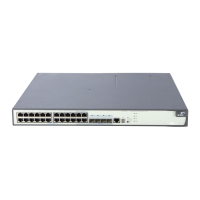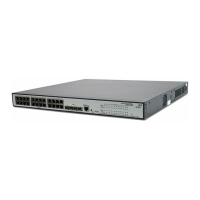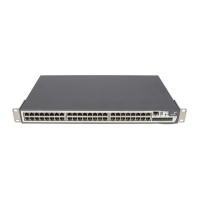1-13
Transmit delay : 2s
Trap interval : 5s
Fast start times : 3
Port 1 [Ethernet1/0/1] :
Port status of LLDP : Enable
Admin status : Tx_Rx
Trap flag : No
Roll time : 0s
Number of neighbors : 5
Number of MED neighbors : 2
Number of CDP neighbors : 0
Number of sent optional TLV : 12
Number of received unknown TLV : 5
Table 1-4 display lldp status command output description
Field Description
Global status of LLDP Indicating whether or not LLDP is globally enabled
The current number of LLDP neighbors Total number of the LLDP neighbor devices
The current number of CDP neighbors The current number of CDP neighbors
Transmit interval Interval to send LLDPDU
Hold multiplier TTL multiplier
Reinit delay Initialization delay
Transmit delay Delay period to send LLDPDUs
Trap interval Interval to send traps
Fast start times
Number of the LLDPDUs to be sent successively
when a new neighboring device is detected
Port number interface-type
interface-number
Port LLDP status
Port status of LLDP Indicates whether or not LLDP is enabled on the port.
Admin status
LLDP mode of the port, which can be:
z TxRx. A port in this mode sends and receives
LLDPDUs.
z Rx_Only. A port in this mode receives LLDPDUs
only.
z Tx_Only. A port in this mode sends LLDPDUs
only.
z Disable. A port in this mode does not send or
receive LLDPDUs.
Trap Flag Indicates whether or not trap is enabled.
Roll time
LLDP polling interval. A value of 0 indicates LLDP
polling is disabled.
Number of neighbors Number of the LLDP neighbors connecting to the port
Number of CDP neighbors Number of the CDP neighbors connecting to the port

